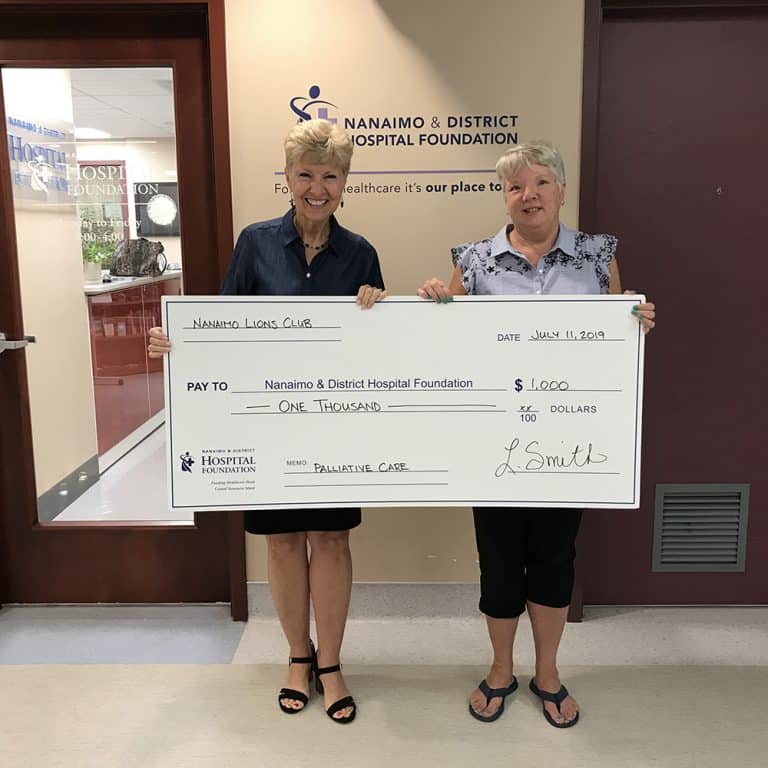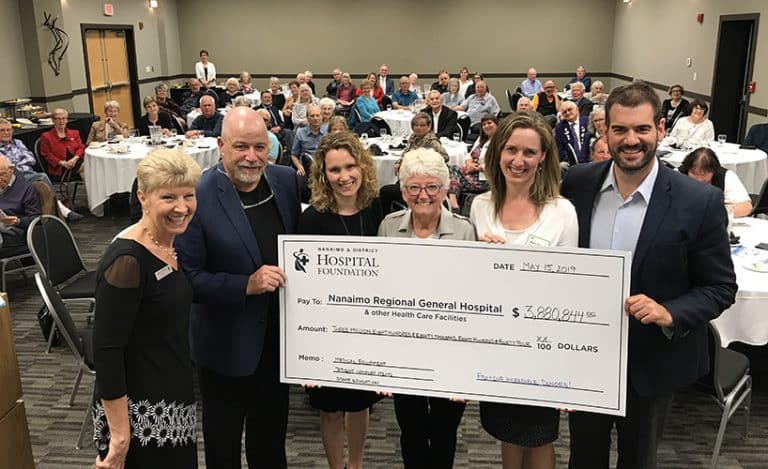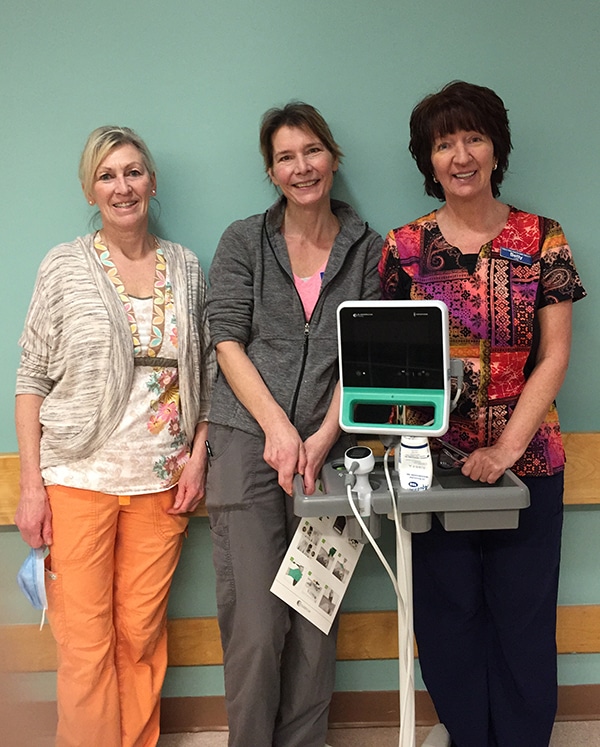Lions Support Palliative Care
Thank you to the Nanaimo Lions Club for their generous donation of $1,000 for Palliative Care! Since their first gift 19 years ago, they have donated over $30,000 to the Hospital Foundation! Photo: Janice Perrino, CEO, Hospital Foundation & Leslie Smith, Nanaimo Lions Club





